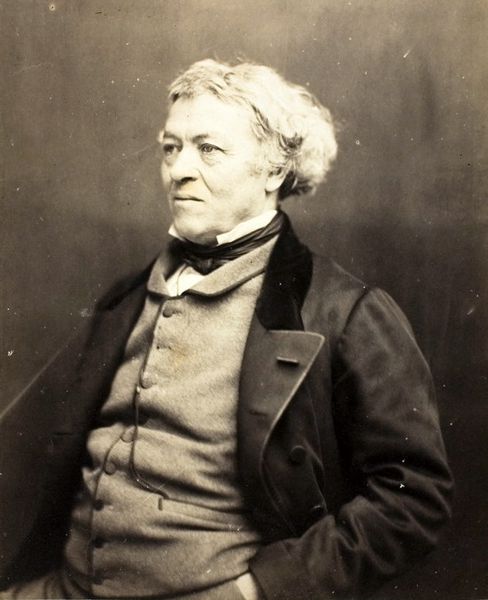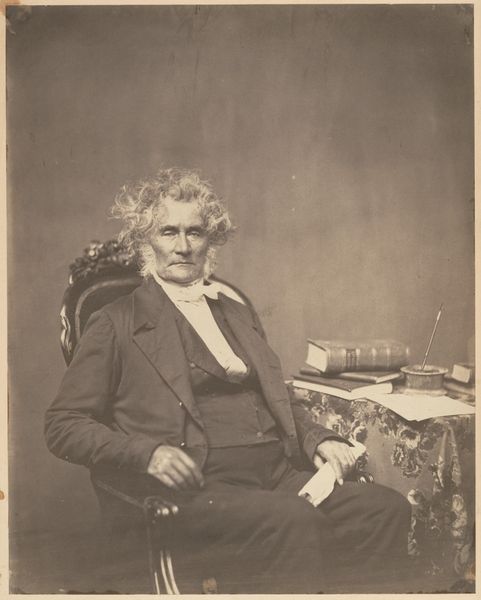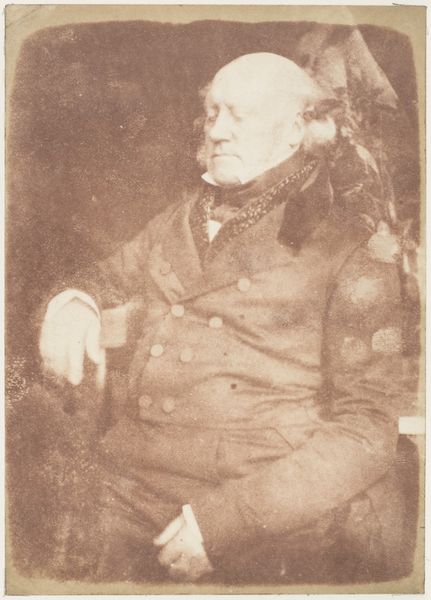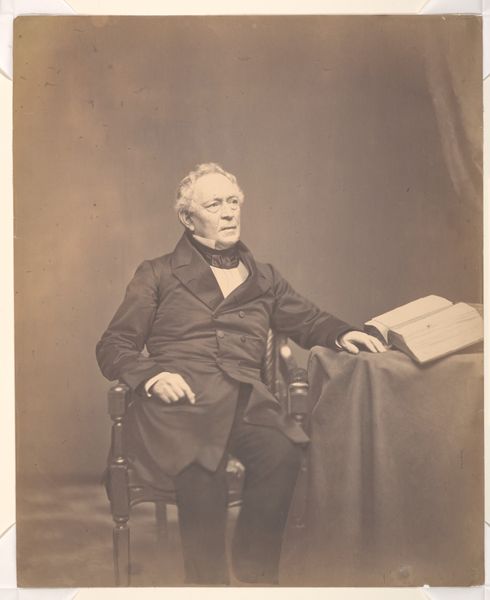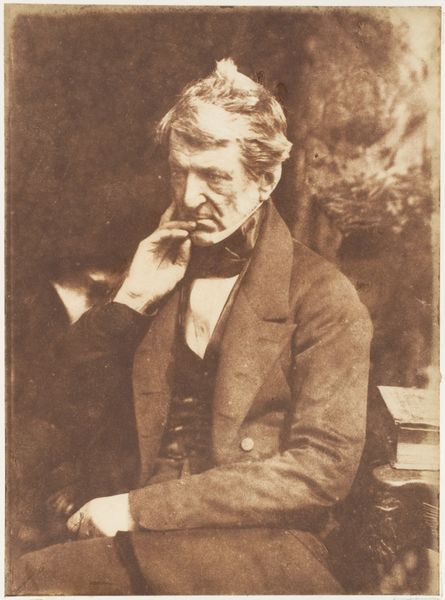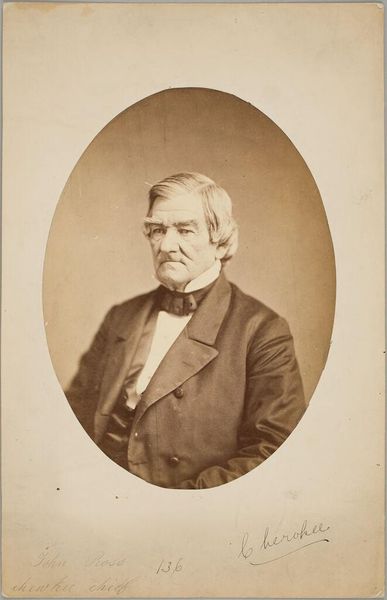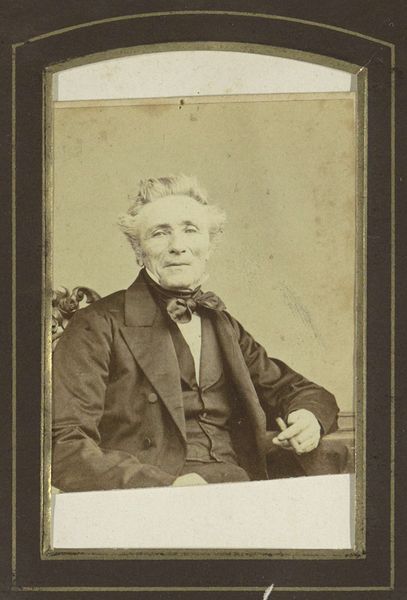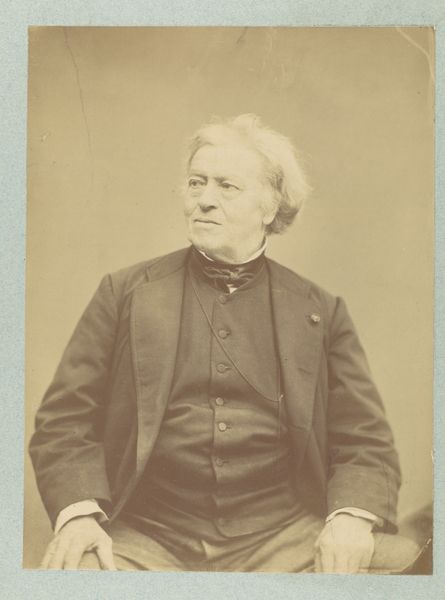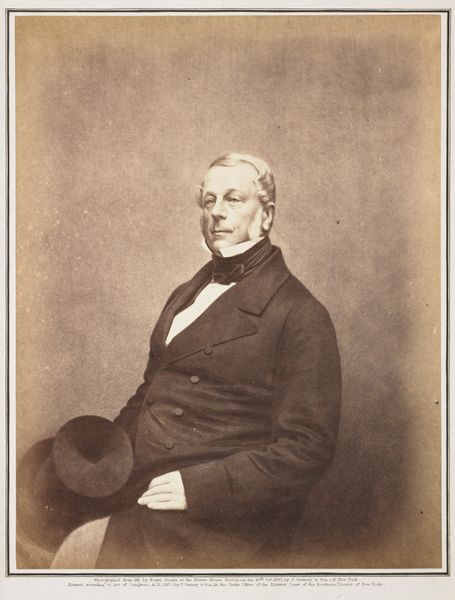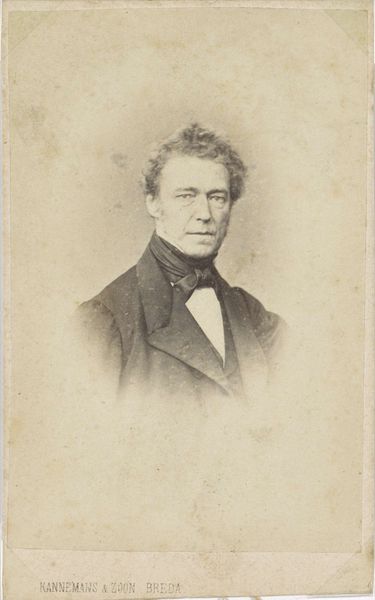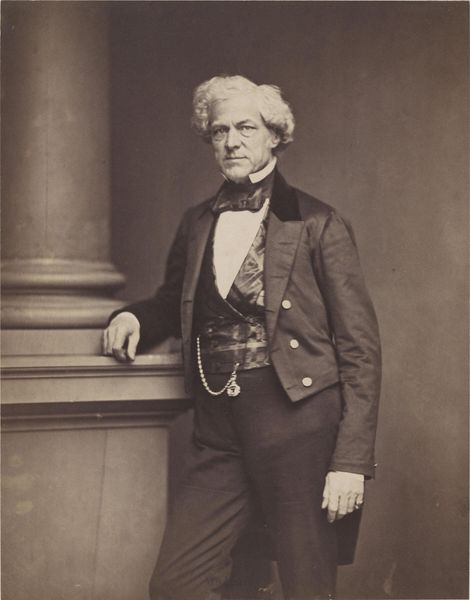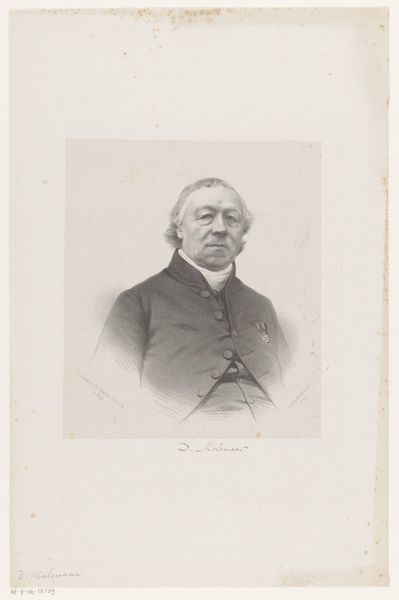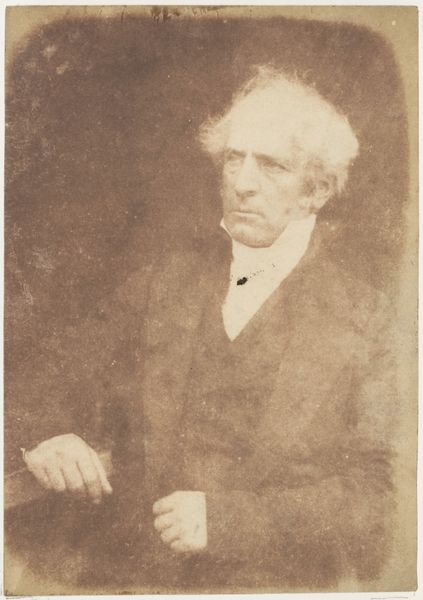
Copyright: Public domain
This portrait of Jean-Baptiste-Camille Corot was made by Felix Nadar, using a photographic process known as the wet collodion process. This was revolutionary at the time, making photography more accessible, but it was still highly skilled work. Photographers had to be quick, because the glass plate negative needed to be prepared, exposed, and developed, all before the collodion emulsion dried. You can see the results of this precarious process in the unevenness of the image, those traces of the hand and the darkroom alchemy. Nadar, himself a fascinating figure deeply embedded in the Parisian art scene, understood the power of photography to democratize portraiture. Painting was expensive, and a long process, photography offered a swifter, more affordable alternative. While this didn't necessarily challenge the art world's hierarchy, it did change the way people saw themselves and each other. The cracks and imperfections visible are not flaws, but traces of labor, and evidence of a shift in the social and economic landscape of image-making.
Comments
No comments
Be the first to comment and join the conversation on the ultimate creative platform.
